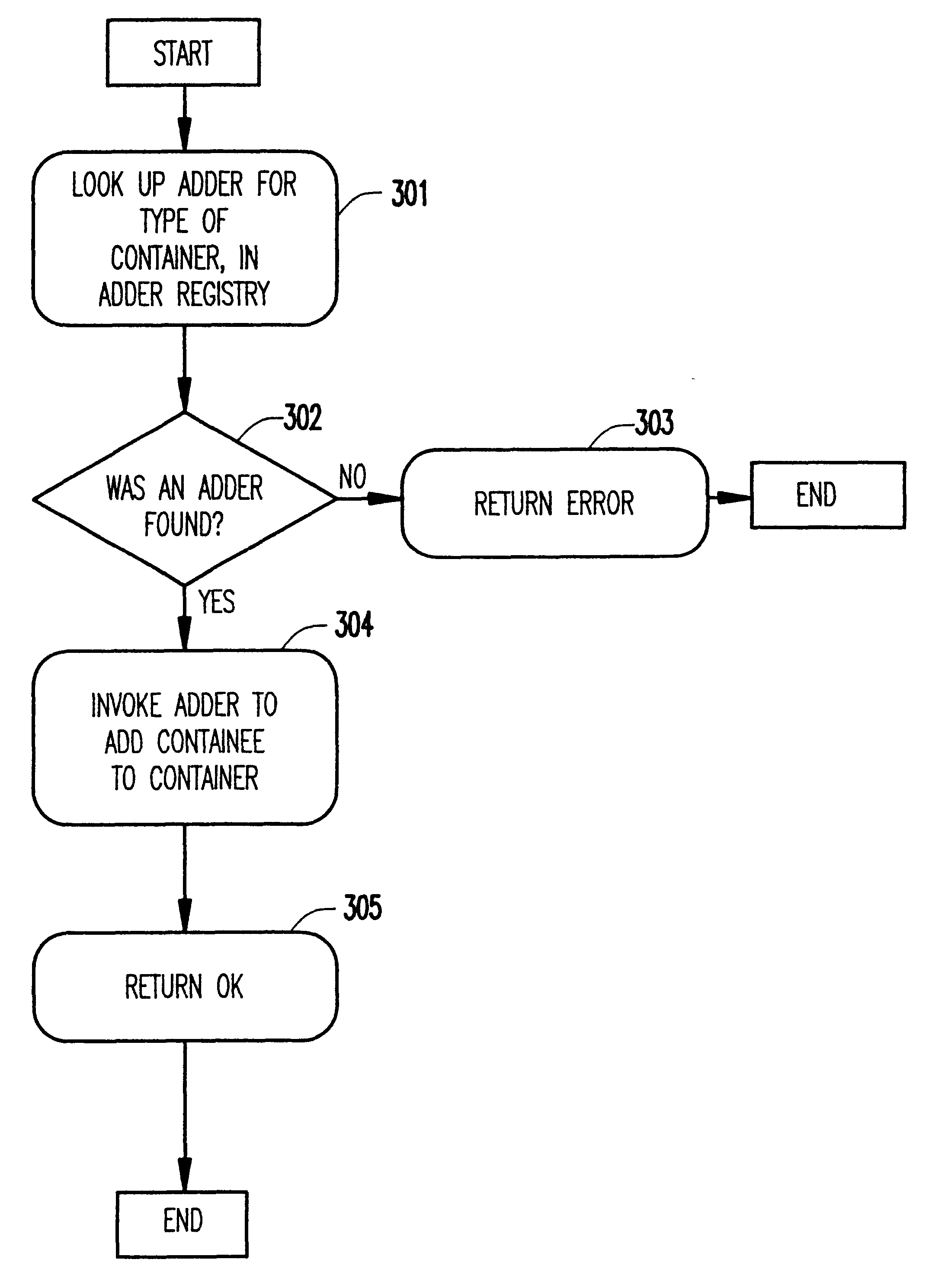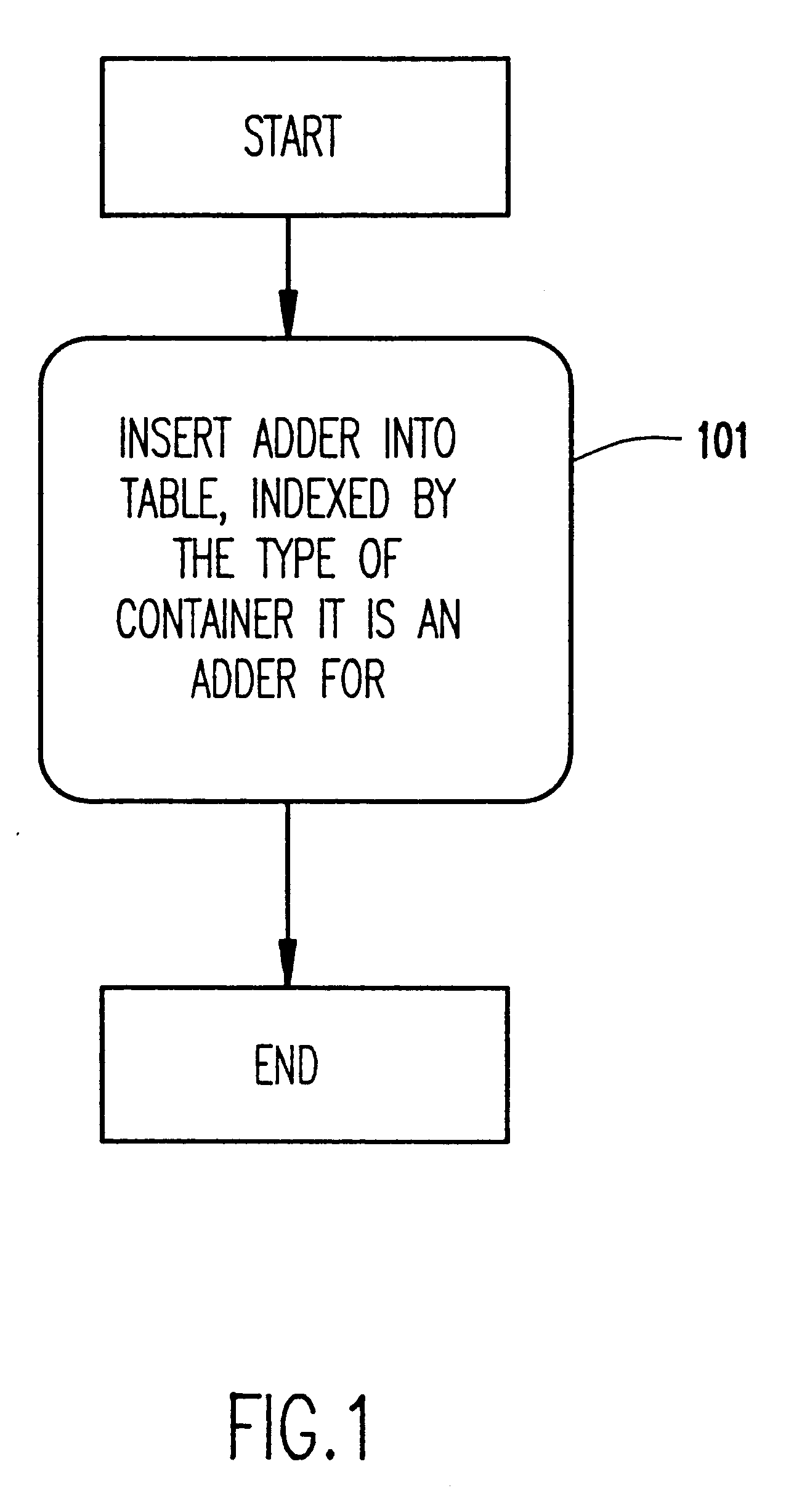Uniform mechanism for building containment hierarchies
a hierarchical structure and structure technology, applied in computing, instruments, electric digital data processing, etc., can solve the problems of c++ implementation costs, code generated by these tools is generally slow in execution, and the approach does not lend itself to a generalized view of containmen
- Summary
- Abstract
- Description
- Claims
- Application Information
AI Technical Summary
Benefits of technology
Problems solved by technology
Method used
Image
Examples
Embodiment Construction
The detailed description is provided in terms of an implementation in the Java programming language. The description uses the following terms:
Container: the object into which other objects are to be added.
Containee: the object which is being added to a container.
Parent: synonym for container.
Child: synonym for containee.
The process of adding a containee into a container is referred to as "adding". The invention allows one to add a containee into a container without being aware of the details of the mechanics of implementing the adding operation.
The invention introduces the concepts of an "Adder" and an "Adder Registry". An adder is an object that understands the mechanics of how to add a containee to a specific type of container. In the Java realization, an Adder is defined by the following interface:
public interface Adder{
public void add (Class parentclass, Object
parent, Object[] args);
}
Thus, an adder is a Java object that implements this interface by providing the add ( ) method d...
PUM
 Login to View More
Login to View More Abstract
Description
Claims
Application Information
 Login to View More
Login to View More - R&D
- Intellectual Property
- Life Sciences
- Materials
- Tech Scout
- Unparalleled Data Quality
- Higher Quality Content
- 60% Fewer Hallucinations
Browse by: Latest US Patents, China's latest patents, Technical Efficacy Thesaurus, Application Domain, Technology Topic, Popular Technical Reports.
© 2025 PatSnap. All rights reserved.Legal|Privacy policy|Modern Slavery Act Transparency Statement|Sitemap|About US| Contact US: help@patsnap.com



